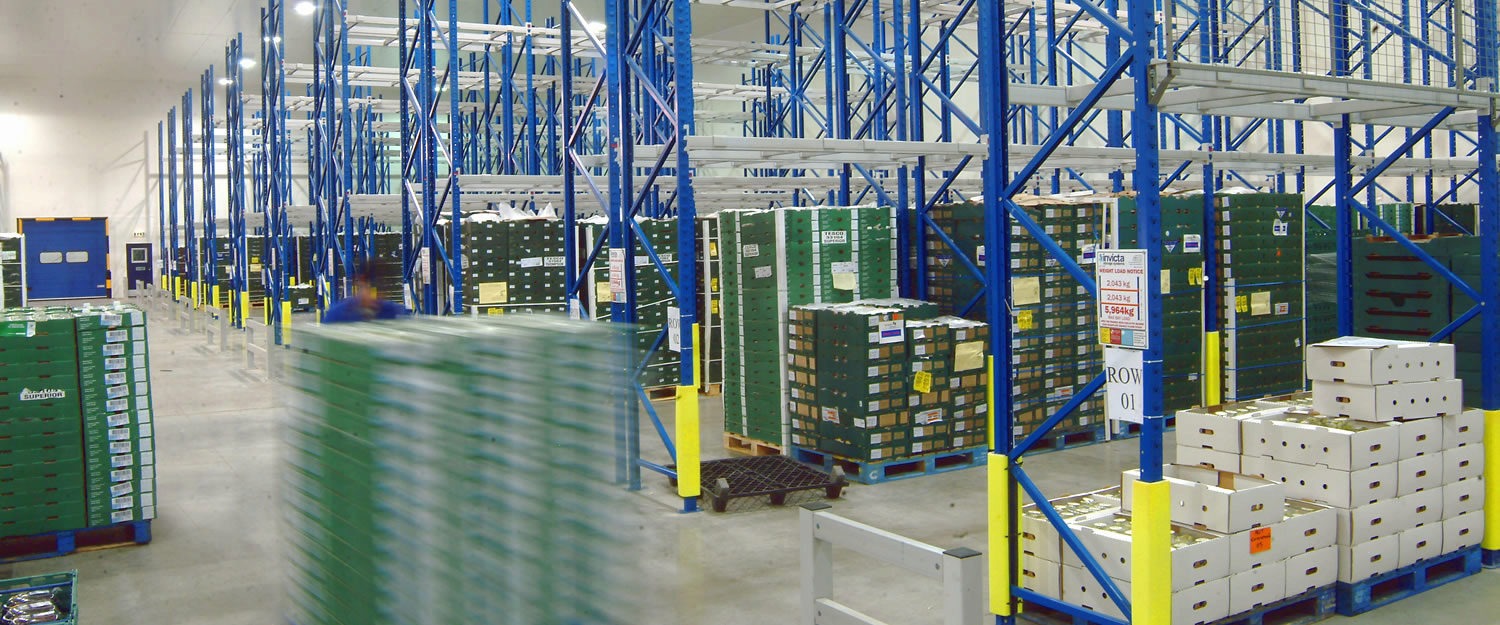For your information
You are being redirected to one of our divisional subsites which contains more detailed information on the required division. To navigate back to the main Invicta Group site, please click the link found in the footer at the bottom of the page.
What Ocado’s growth says about the future of fulfilment
21st March 2023
Quick Quote
Contact Mick Coyne
To get a quotation or arrange a free site survey - Call Mick Coyne on
-
 UK
UK
Current location:
Quick Quote
Contact Mick Coyne
-
 UK
UK
Current location:
One of the biggest British success stories in recent years has been the rise of Ocado. The grocery delivery company has gone from plucky online upstart to global pioneer, licensing out its innovative fulfilment technology. The company’s share price recently doubled in the space of a few weeks, with investors buoyed by another major licensing deal, as well as additional investment from retailer Marks & Spencer.
However, it hasn’t been all plain sailing. Ocado has faced numerous setbacks in recent years, some of which seemed catastrophic at the time for its chances of global expansion. So why exactly is Ocado riding so high at the moment, what has changed from those well-publicised issues – and what does the business’ ongoing success say about the future of fulfilment?
A British success story
Ocado’s journey from groceries also-ran to tech powerhouse has been a remarkable one. Founded in 2000, the company saw the promise in online grocery shopping, becoming the UK’s first dedicated online grocery retailer. When it forged an initial partnership with grocery chain Waitrose in 2002, Ocado had a delivery catchment area of 2.2 million people. By 2006 this included 10 million houses and over 50,000 orders a week, leading a surge in online shopping in the UK.
Launching their shopping app on the iPhone in 2009 – what they claim was the “first ever transactional shopping app” – the company entered a 10-year partnership with high-end retailer John Lewis in 2010, and launched an initial public offering on the London Stock Exchange the same year. Strategic partnerships with grocery chains Morrisons and Marks & Spencer followed in 2013 and 2020 respectively, with Ocado now selling M&S goods alongside its own-name brands.
Ocado today is a very different beast than it was in the early 2000s. As well as selling its own goods using its vast fulfilment network, and allowing other retailers to utilise that network, Ocado now operates six technology development centres across Europe, investing heavily in retail R&D. The company’s Customer Fulfilment Centres (CFCs) and Ocado Smart Platform (OSP) are now driving not just Ocado’s business, but multiple businesses and hundreds of sites around the world.
The robot revolution
We wouldn’t be talking about Ocado if they were just another British grocery business. Indeed, the UK grocery business isn’t an area where they are especially dominant, with many other major players vying for that crown. The differential factor in Ocado’s business is their unique fulfilment model, and the technology that drives their warehouses. This has not just allowed them to compete domestically, but to forge partnerships around the world.
Ocado have benefitted from the UK’s early uptake of online shopping, and used this to build an entirely new fulfilment model. An early investor in warehouse robotics, Ocado have diverged from investors such as Amazon to focus on a highly specific area of fulfilment: picking small items. Where Amazon have had to broaden their approach due to the breadth of items they offer, Ocado’s investments have been focused on automatic picking of small grocery items.
The result is a reliable model that can now be franchised and exported. Ocado’s tight, vertical warehouses are constructed to limit space and expenses – as are its workers. These warehouses are also entirely staffed by autonomous robots, which sit on top of a grid of tall racks. Each racking ‘silo’ contains crates full of items, which are elevated to the top of the racking, the picking face for the robots.
Receiving instructions wirelessly, the robots pick orders from supply crates and transfer them to order crates, which are then moved down the racking and to a distribution area for delivery. The only human operatives in the warehouse are those monitoring the robots and order management system to ensure everything is working properly, and those who are responsible for shipping the completed orders.
Bumps in the road
Ocado’s gamble on robotics is paying dividends. Despite two major warehouse fires in two years – one of which destroyed its primary warehouse – the company has gone from strength to strength. Not deterred by the hiccups, the efficacy of the warehouse tech is such that Ocado has licensed it to some of the world’s biggest retail chains, including Lotte Shopping in South Korea, Kroger in the United States, and Coles Group in Australia.
While the Andover fire in particular highlighted the perils of battery technology in such confined spaces, it was exacerbated by the incorrect actions of staff, who turned off the sprinkler system to try and fight the fire themselves. The corrective action has been such that investors seem confident enough to plough on – or simply perceive the benefits to be much greater than the risks. The question is not whether this is the future of grocery distribution, but how much further it can be developed.
The obvious takeaway would be that such largely autonomous warehouses would be a boon for businesses, but the end for many warehouse employees. However, this may be short-sighted. As we’ve pointed out, Ocado has succeeded by operating within its niche, albeit a very large one. While Ocado has succeeded in removing much of the human component in its warehouses, it has done so with highly specialised racking – and added high skill jobs elsewhere.
The warehouse of the future
Warehouses may increasingly employ automation for manual tasks, particularly as the key hurdles with robotics – namely gripping delicate items – are cleared. But such automation will not always be cost-effective for every business, or suited to the swathes of existing warehouse space. Ocado’s highly specialised technology serves new warehouses in one industry, but even more than this, it serves a new kind of warehouse, both technologically and geographically.
As the space for warehouses decreases, and the demand for next-day or same-day shipping increases, warehouses are increasingly encroaching on urban areas. This seems to be much more the end goal for Ocado’s technology than anything else: the ability to automate small and micro fulfilment centres, providing local distribution at any time of day. What’s more interesting – and more relevant to other warehouse operators – is the company’s software development arm, and its Ocado Smart Platform (OSP).
OSP involves Ocado’s picking robots, but what’s equally important is the way it marries ecommerce with storage and logistics. OSP is an end-to-end software solution, including everything from the ecommerce platform to warehouse and logistics management. Orders are placed, forwarded to the local fulfilment centre, sent to the robots, picked, packed and shipped, all within the confines of a single software environment. This is where the gains are made, and is more representative of what the warehouse of the future will look like.
We’re close to a future where all warehouses operate using an advanced WMS that marries sales with inventory management and distribution. Autonomous vehicles or operatives with augmented reality (AR) glasses will be sent orders automatically to pick, with sensors and scanners to confirm each step of the process. The 3PL or other logistics provider will be married into this process, allowing the same software that tracks every movement and every item in your warehouse to track the delivery to the door, and provide this information to the customer.
–
Ocado is a heartening success story for modern Britain, but also a harbinger for the future of warehouses across the world. While we may yet see a fully autonomous future, this isn’t necessarily the biggest change being brought by Ocado. Instead, the software is king – with hardware only helping warehouses towards a more efficient and interconnected future.
Accreditations & Affiliations







Start your project
Tell us about your project. Please complete this form. One of our sales team will come back to you with more details. If you prefer, you can drop us an email.




Share/Like this page